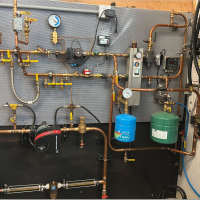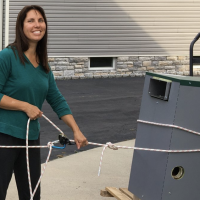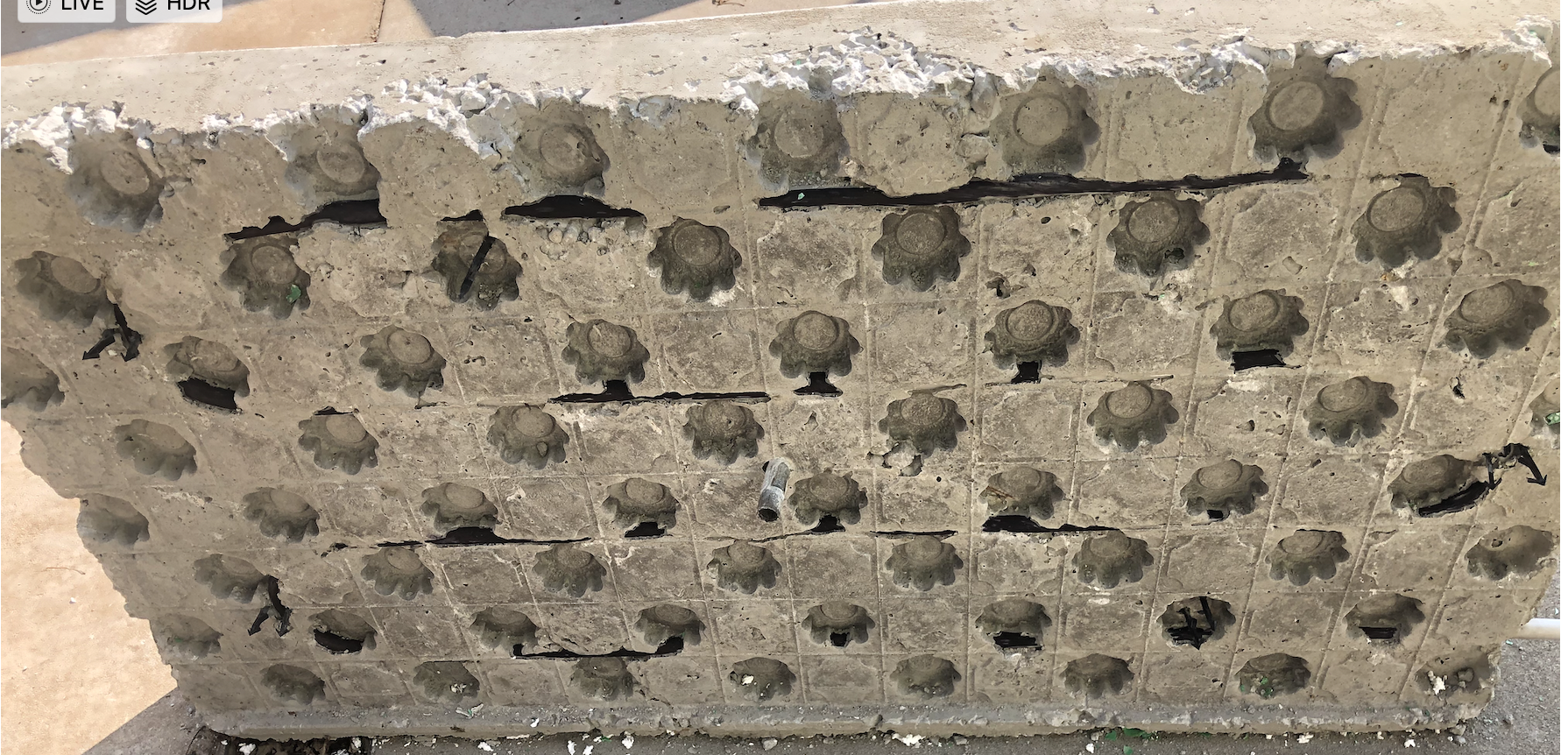Under Slab Insulation Foam Board Size 1" or 2"
Glad I found this group. Getting ready to start a DIY radiant floor system below slab. My frost line is 12". The questions I have are below;
- Is there any reason why I could not use a 1" EPS reflective foam like an R-Tec vs a 2"
- Boiler vs hot water heater thoughts?
- Is there a quick app or website that I can use to layout my loops?
- Source for bulk purchasing of insulation foam boards?
Thanks so much for any and all help. We plan to start next week April 15th….
Comments
-
I would go with a 2" board like Dow BlueBoard or the Owens pink.
The heat load calc for the space would tell you loop spacing and lengths.
Anymore I suggest slabs get a 6" spacing to allow for the lowest operating cost, quick recovery, even floor temperature. Well suited for heat pumps and condensing boilers.
I think LoopCAD has a free demo at their site?
How many square feet are you looking at? The Big Box stores seem to be the lowest cost for foam around here unless you are buying a semi trailer load. Many lumber yards and insulation suppliers have it also.
Spray foam on the ground is common around here also, for under radiant slab insulation. You get the vapor/ radon seal with spray foam.
Bob "hot rod" Rohr
trainer for Caleffi NA
Living the hydronic dream3 -
Is there any reason why I could not use a 1" EPS reflective foam like an R-Tec vs a 2"
Roughly twice the heat loss into the ground is a possible reason. Also I think reflective insulation is really only a factor for radiant heat, not really a concern when considering conductivity of heat from the slab to the earth. Is that correct @hot_rod ?
NJ Steam Homeowner.
Free NJ and remote steam advice: https://heatinghelp.com/find-a-contractor/detail/new-jersey-steam-help/
See my sight glass boiler videos: https://bit.ly/3sZW1el0 -
I think there needs to be an air space for the reflective component to work. The transfer from a slab is mostly conductive, I don't see the foil adding any value against the bottom of the slab.
I believe some of the mechanical and energy codes have a foam thickness requirement now. Areas of Canada do, and it was 4" for a few years!
Excellent info at healthyheating.com, but the site is down for construction.
Bob "hot rod" Rohr
trainer for Caleffi NA
Living the hydronic dream2 -
-
Cart before the horse. First step is to figure out a reasonable estimate of building load.
Once you know the load, it will tell you how warm the slab needs to be to heat the place and from there you can calculate how much heat you loose to the dirt bellow. I'm in colder climate and there is reasonable ROI for 3" rigid with a heated slab.
The EPS nub panels are the norm for heated slabs here as it is a much easier install plus the nubs protect the pipes from trades walking on it.
2 -
first I just thank everyone for the solid feedback. A lot of points have been addressed from my post and you have given me a much better direction. The loop CAD suggestion was very helpful. I’ll shoot some photos and share them shortly.
0 -
The nub type panels are quick and easy, but they do put the tube at the very bottom of the pour, and surrounded by foam and air in some cases. You will have higher downward loss, slower response, lower output, and need higher supply temperature.
It's not too hard to fasten tube to 6X6 mesh and elevate it into the slab pour 2", you want the tube encased in the slab ideally.
Here is how I did my shop, tube 6" oc and mesh lifted with small blocks of foam. Or buy the continuous strip metal bar chairs.
Bob "hot rod" Rohr
trainer for Caleffi NA
Living the hydronic dream0 -
Bite the bullet now...your wallet will thank you. The environment will too! Mad Dog
1 -
-
Last question. Best option for Pex? A,B or C?
0 -
-
12" frost depth means warmer climate.
In warmer climate anything built reasonably air tight with code min insulation values will have relatively low heat loss. 8 to 12 btu/sqft is not uncommon and if you get above 20, you have done something seriously wrong. This means if you heat the whole slab the slab will never ever get the warm toes feel people associate with heated slabs.
Warmer climate means AC so you need ductwork. The cost delta for a heat pump over AC is pretty much noise and that same ductwork can now easily heat the whole place. The floor heat is now now becomes a reduandant heat source with high BOM and install cost. Even if you can DIY the whole thing, it is still hard to justify the cost.
Even in my much colder climate, people often build with tubes in the slab and they never end up connecting it. A new build with sub slab insulation the floor is never cold and the cost of the boiler is simply not worth it in the end.
Like I said earlier, figure out a reasonable heat loss for your place, once you have that, you can look at the best way to supply that heat and cooling.
In most cases this tends to be a right sized ducted heat pump with resistance mat floor heat for tiled areas like bath/kitchen/entrance mudroom.
Bonus, without a heated slab, you don't need as much rigid under the slab as the losses are now much lower. In some warmer climates you can even skip the rigid.
1 -
-
@skyking1 Please don't take this the wrong way, just important to have out there for prosperity in case people are looking at similar project in the future.
With a heated slab you need to insulate the slab completely, fully decouple it from the dirt.
Soil is a great heat sink and concrete an excellent heat conductor. Without insulation under the thickened section and the footing in the middle a lot of the heat will be lost to heating the dirt bellow. Codes allow for rigid under the thickened section but it is a bit fussy install due to the slope change. Rigid under the footings also works but you'll need an engineer to design it. You also need rigid on the outside of the slab edge up to grade.
Generally if you are designing for heated slabs, it is better to go with regular footings and slab as it is much easier to wrap the rigid around the slab and insulate it from the footings and dirt plus you don't have to deal with rigid under loadbearing bits.
Unfortunately with the current setup, there isn't all that much you can do. Adding in the slab edge insulation will help.
0 -
I'll let you know how it works out. Keep in mind the walls are 13.5" thick.
The foundation was engineered and that was the detail.
The bury depth of all of it except the walkout door slab is >33" below FF. That is edge insulated.
Frost grade is 12".
Average soil temp is 50 F.
It is an unfinished basement I will keep at about 60.
Delta T is 10.
1 -
hello everyone. Getting ready to start on the project tomorrow. Currently, we are using a gravel bed on a superior wall precast basement. It is my understanding the layers should be in this order,
- vapor barrier goes over top of the gravel bed.
- 2 inch foam board goes on top of the vapor barrier
- Pex tubing stapled to foam board
- Finally concrete.
My concrete crew wants to put the vapor barrier over top of the foam instead of on top of the gravel. Can anyone comment on this?
0 -
vapor barrier on top of the foam then the tube stapled over it? That defeats the purpose of the vapor barrier?
Bob "hot rod" Rohr
trainer for Caleffi NA
Living the hydronic dream0 -
Poly always over rigid. This serves two purposes. Keeps the foam from floating up into the concrete and prevents water from being trapped between the foam and the poly which would reduce its effective R value.
Holes from the staples through the poly are not an issue as it still works as a vapor barrier.
Important detail is to insulate the heated slab from the dirt and the foundation. Make sure the slab is wrapped in rigid also along the edges. Look at Fig1 here of what this should look like:
0 -
Various opinions on holes in vapor barrier. Joe is a respected opinion, not sure how much hands on work he has done putting down concrete?
On one large radiant slab I saw the concrete guys take a rake to the poly sheeting and perforate it. The concrete cures much slower when all the waters of convince have to come out the top. That costs them time and money having the crews wait for the slab to cure for the final finish.
I have also tapped the seams of the insulation board, if it lays perfectly flat, as it should.
Bob "hot rod" Rohr
trainer for Caleffi NA
Living the hydronic dream0 -
thanks for everyone’s comments
0
Categories
- All Categories
- 87.3K THE MAIN WALL
- 3.2K A-C, Heat Pumps & Refrigeration
- 61 Biomass
- 429 Carbon Monoxide Awareness
- 120 Chimneys & Flues
- 2.1K Domestic Hot Water
- 5.8K Gas Heating
- 114 Geothermal
- 166 Indoor-Air Quality
- 3.7K Oil Heating
- 77 Pipe Deterioration
- 1K Plumbing
- 6.5K Radiant Heating
- 395 Solar
- 15.7K Strictly Steam
- 3.4K Thermostats and Controls
- 56 Water Quality
- 51 Industry Classes
- 50 Job Opportunities
- 18 Recall Announcements

















